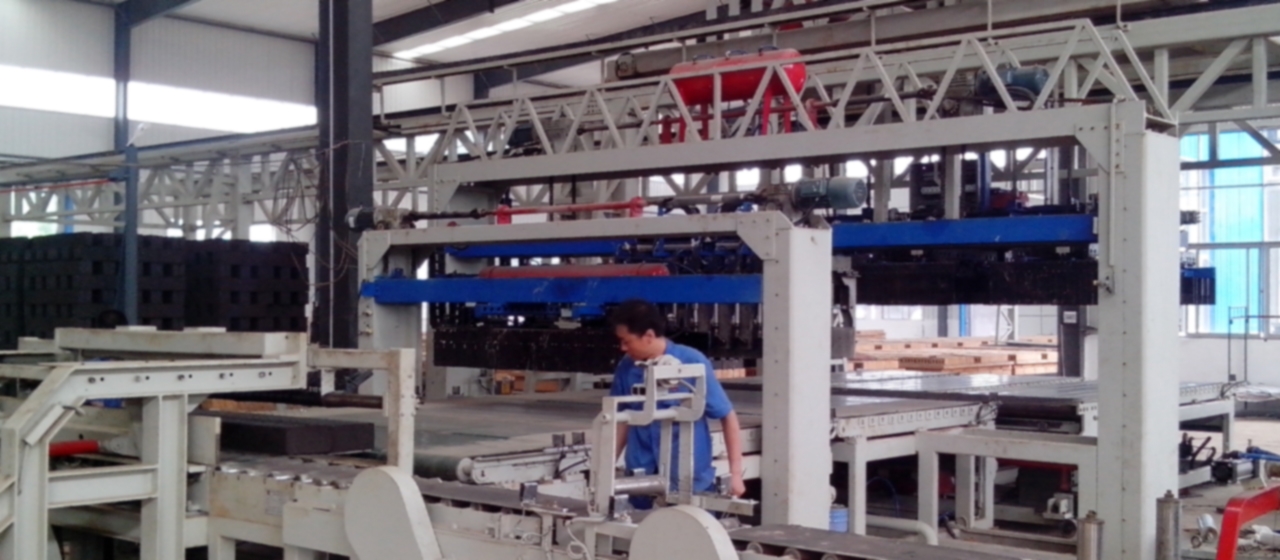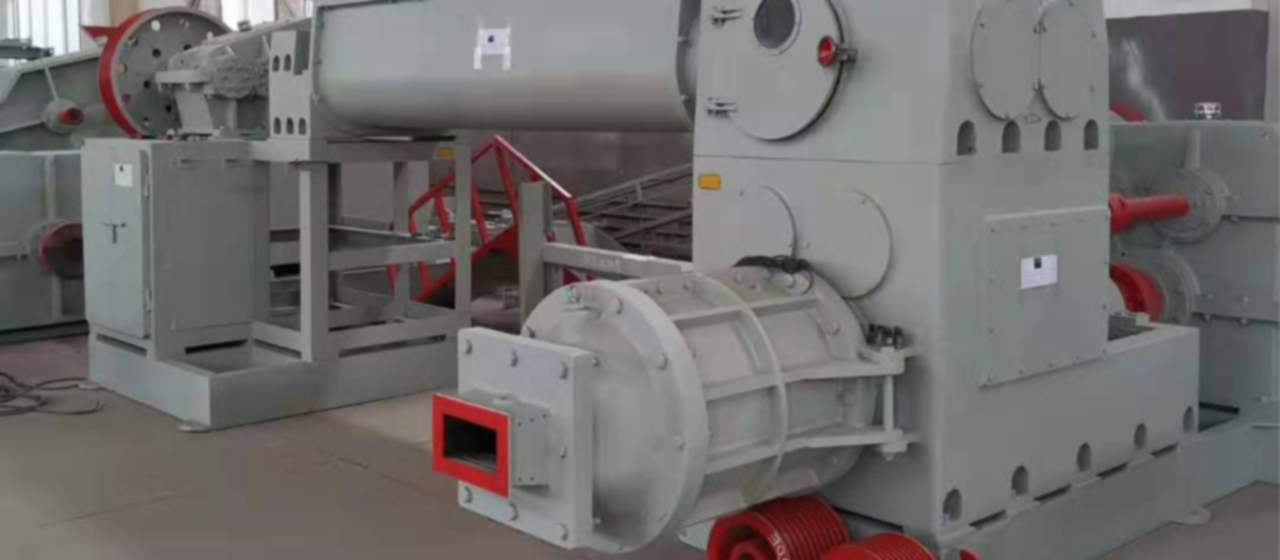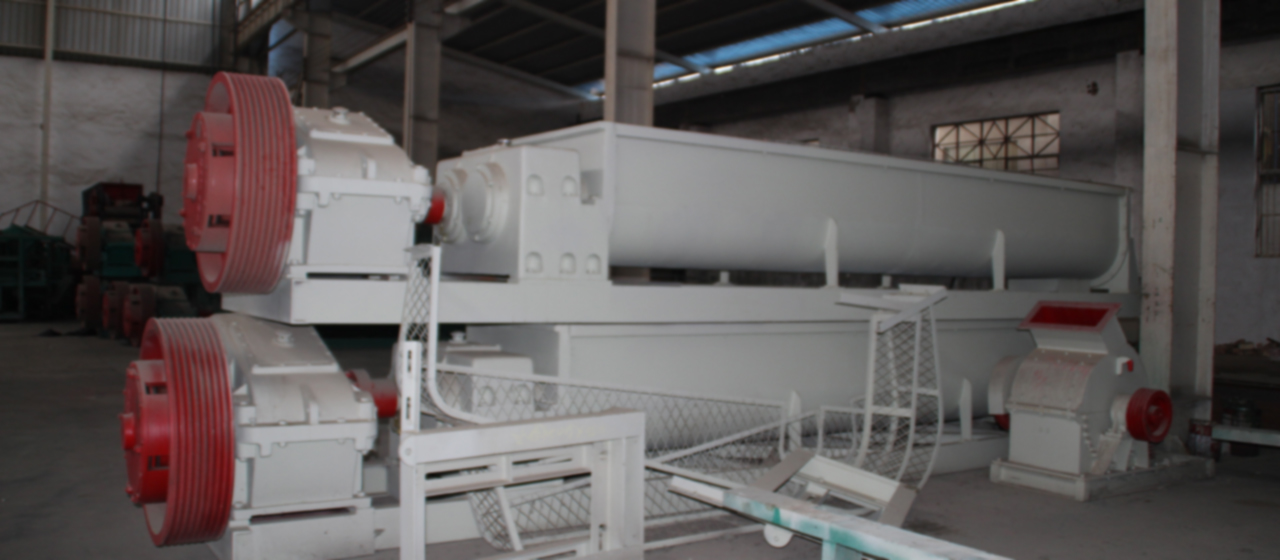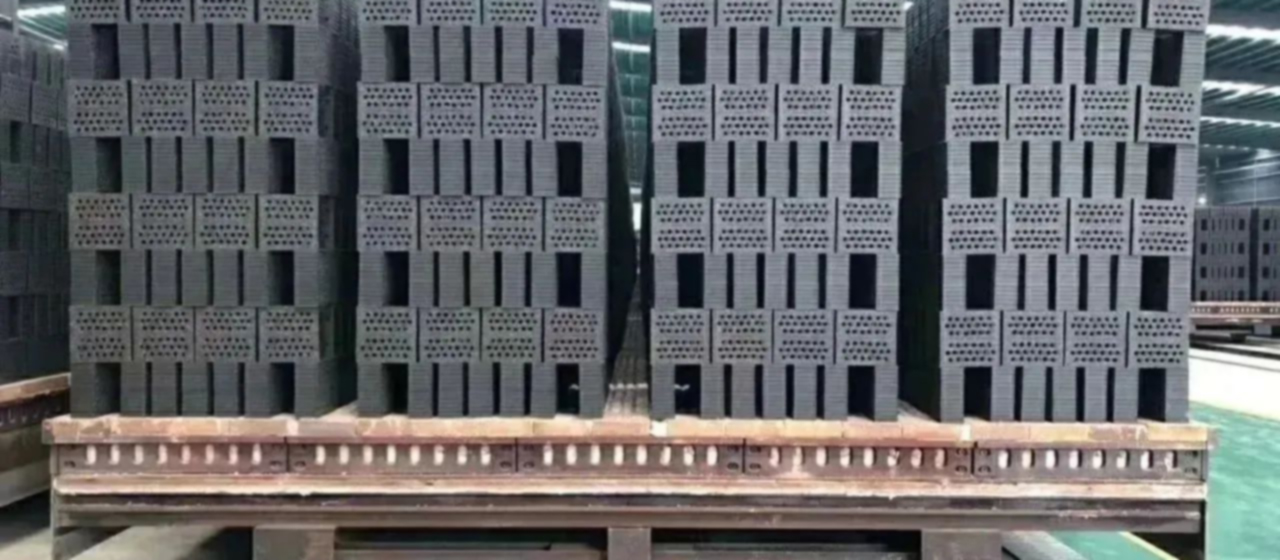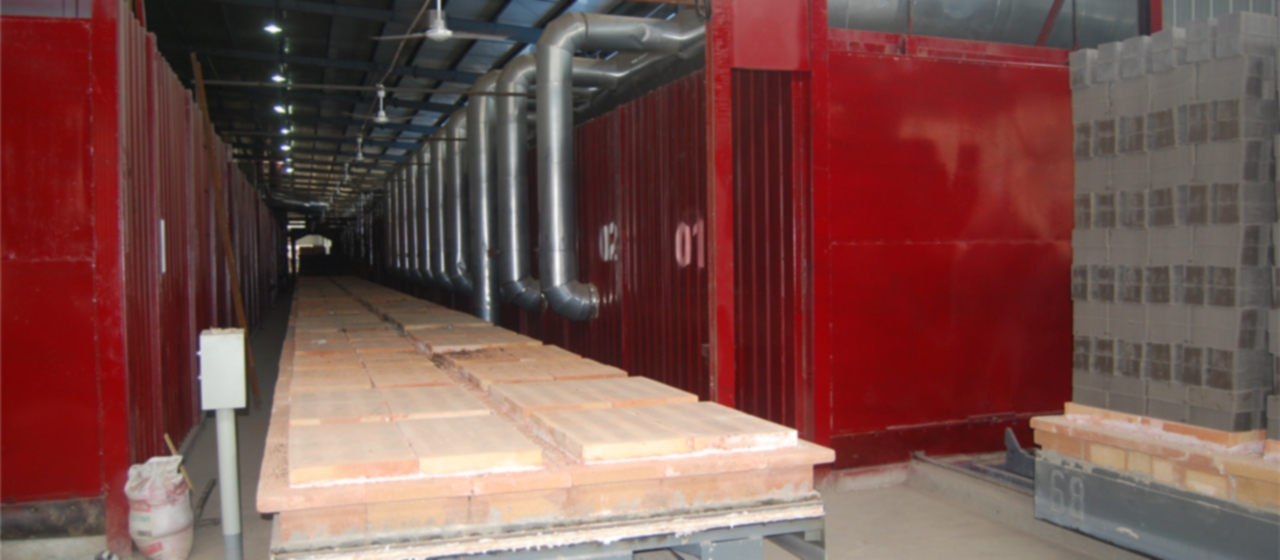attrezzature per la produzione di mattoni
Analysis of the reasons for the quality problems of brick blanks in the drying room
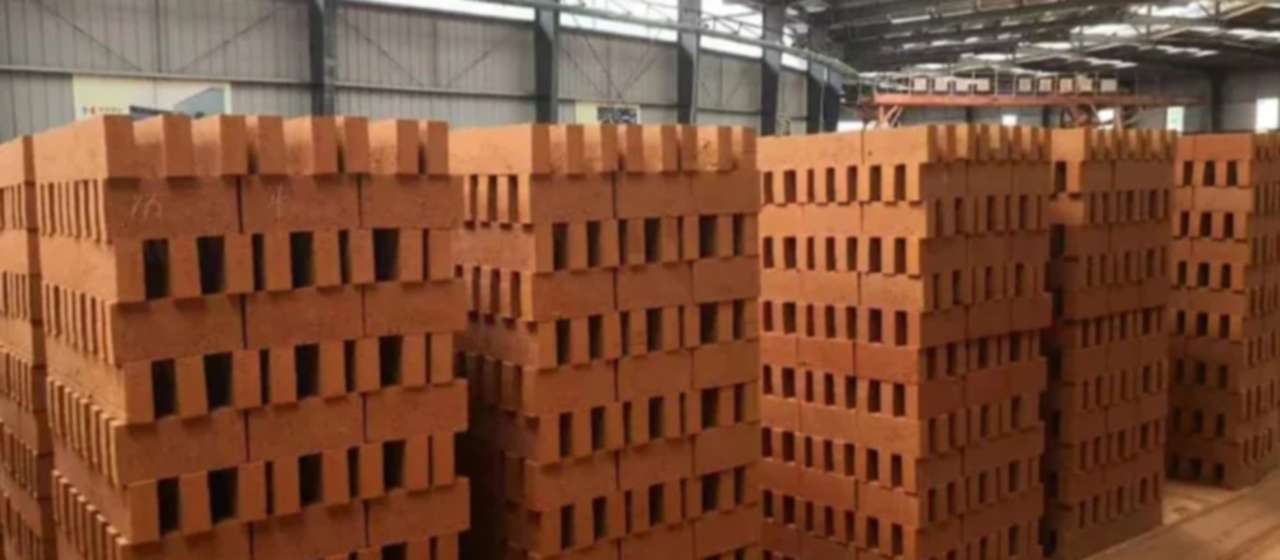
Bricks coming out of artificial drying rooms often have various types of cracks, but not all are caused by drying. Per esempio, spiral cracks, S-shaped cracks, healing cracks, scissor mouth cracks, crescent shaped cracks, and cracks on the four edges during extrusion of clay strips are all mechanical results. The cracks that actually occur due to drying itself are mostly irregular web like cracks, as well as warping cracks caused by uneven drying speed and uneven shrinkage of various parts of the brick body, This situation belongs to the problem of dryness.
The most common problems that occur in artificial drying rooms are mostly during the transition period between spring and summer and autumn and winter, and the most unstable period is also during this period. This often leads to increased damage to the bricks, causing them to fail to dry and collapse, resulting in the inability of the drying room to function properly. Below is an analysis of the reasons for the quality of brick blanks in the drying room, in order to provide everyone with a comprehensive understanding of some dynamics and attention methods during the drying process in the production process:
1、 Master the structure of an artificial drying room
The drying of brick adobe is usually divided into four stages, namely heating, constant rate drying, slow rate drying, and balance. I compiti di ciascuna fase sono diversi, e le condizioni strutturali di ogni fase sono completamente diverse.
1. Durante la fase di riscaldamento, l'essiccazione dei mattoni progredisce gradualmente dall'infiltrazione superficiale all'infiltrazione interna. In primo luogo, rimuovere l'acqua dalla pelle, riscaldarlo e vaporizzarlo, che viene portato via dall'aria calda secca. Poi, l'acqua all'interno del corpo in mattoni si sposta verso la pelle, vaporizza e viene scaricata. A quest'ora, la temperatura dell'aria calda non dovrebbe essere troppo alta, poiché causerà difficoltà nel trasferimento dell'acqua interna. Se la pelle si asciuga troppo velocemente, causerà il ritiro da essiccazione, e ci sarà ancora molta acqua all'interno del corpo, che lo farà “espandere” e rompere la pelle, con conseguenti crepe. Esistono due modi in cui l'umidità può spostarsi: uno è spostarsi da un luogo umido a uno asciutto, e l'altro è spostarsi da un luogo ad alta temperatura a uno a bassa temperatura. Per mattoni appena entrati nell'essiccatoio artificiale, la temperatura e l'umidità all'interno e all'esterno sono le stesse. Se la temperatura ambiente è troppo alta, la superficie si disidraterà, e l'umidità interna si sposterà verso lo strato superficiale. Tuttavia, se la temperatura superficiale è superiore alla temperatura interna, l'umidità si spingerà verso l'interno, rallentando così la velocità dell'umidità che si sposta verso lo strato superficiale. Perciò, speriamo che questa fase non faccia altro che riscaldarsi e disidratarsi meno. Quando la temperatura all'interno e all'esterno del mattone sale a quella successiva “constant rate drying” palcoscenico, l'acqua interna può spostarsi rapidamente in superficie senza ostruzioni, replenishing the water removed from the surface, so that the inside and outside of the brick can be dehydrated and shrink synchronously, and prevent the occurrence of drying cracks.
2. During the constant speed drying stage, free water is mainly discharged from the bricks. When the overall temperature of the brick rises to a temperature close to that of the surrounding air, the brick enters the stage of constant rate drying. A quest'ora, il tasso di disidratazione sulla superficie del mattone è uguale alla velocità con cui l'acqua interna si sposta in superficie, ottenere una disidratazione sincrona, essiccazione, e contrazione senza fessurazioni all'interno e all'esterno del mattone. In questa fase, tutto il calore ottenuto dal mattone viene utilizzato per l'evaporazione dell'acqua, e la temperatura del mattone non sale più. Perciò, il mattone si disidrata e non si riscalda durante la costante fase di asciugatura. Questo è anche un periodo pericoloso per l'essiccazione dei mattoni. Durante questa fase, l'acqua libera viene eliminata dai mattoni, e anche i mattoni sono in fase di rapido ritiro. I mattoni sono stati rimossi 5% dell'acqua che avrebbero dovuto rimuovere, e allo stesso tempo, i mattoni si sono inoltre ridotti della metà del loro ritiro totale da essiccazione. La chiave di questa fase è integrare tempestivamente e adeguatamente il calore perso a causa dell'evaporazione dell'acqua, senza causare cambiamenti improvvisi nel flusso d'aria e nell'umidità dei mattoni. Altrimenti, le crepe saranno inevitabili. Durante questo periodo, it is necessary to adjust the opening of each heat supply gate and the size of the moisture discharge port reasonably to achieve inlet and outlet balance.
3. In the deceleration drying stage, the main purpose of the brick is to remove adsorbed water tightly wrapped around the mud particles. Due to the close combination of adsorbed water and mud particles, dehydration is more difficult and requires more heat, resulting in a significant decrease in drying speed. Tuttavia, due to the fact that drying shrinkage has basically stopped at this time, the possibility of drying cracks is reduced. It is possible to boldly heat up and accelerate drying.
4. Balanced drying stage. Once the residual moisture in the adobe reaches equilibrium with the moisture in the surrounding air, the moisture in the adobe will no longer be removed and drying will end.
2、 The difference between positive pressure and negative pressure tidal discharge
The artificial drying room with positive pressure and moisture discharge should regularly check and control two key points of 80%. In primo luogo, the relative humidity of the discharged gas at the kiln inlet should be greater than 80%, preferably 95%, in order to achieve the highest usage value. Altrimenti, the nearest 2-3 moisture discharge ports to the inlet end should be temporarily partially blocked to allow the moisture body to move towards the inlet end. A quest'ora, it should be checked every 2 hours or so. Once the relative humidity of the discharged gas at the kiln inlet reaches 95%, it should be slightly uncovered to cover the back moisture discharge port, and attention should be paid to adjusting the gate. Prevent the relative humidity from continuing to rise, causing the bricks on the drying room to become damp and collapse. The second is that the relative humidity of the discharged gas in the middle section of the drying room should be less than 80-85%. Altrimenti, these gases with higher humidity will continue to move forward, humidity will continue to increase, and temperature will continue to decrease. When they reach the drying and heating stage, their relative humidity will reach 100%. When encountering cold bricks entering the drying room, it will inevitably cause the bricks to absorb moisture, condense, e nei casi più gravi, collapse. Once it is found that the relative humidity of the discharged gas at this stage is greater than 80%. The moisture outlet of this section should be immediately removed, and the high-temperature airflow should be released and detected at any time. Once the relative humidity of the discharged gas drops below 80%, immediately close the open moisture discharge port to avoid wasting heat and reducing drying efficiency. For manual drying with negative pressure moisture discharge, the zero pressure point must be strictly controlled to prevent drift.
3、 Master the appropriate technical parameters for hot air in artificial drying rooms
When the brick blank enters the drying process, la temperatura dell'aria calda deve essere regolata in base alle diverse esigenze delle varie materie prime. La temperatura per i mattoni forati in argilla e i mattoni sinterizzati con ceneri volanti è 60-80 ℃. Per mattoni pieni di scisto, ganga di carbone e altre materie prime con un coefficiente di sensibilità all'essiccazione di 1-2, è 100-120 ℃. Per mattoni forati, è 80-100 ℃. Per mattoni di scisto e mattoni di ganga di carbone con un coefficiente di sensibilità all'essiccazione inferiore a 1, può essere adattato a 120-125 ℃. La temperatura dei gas di scarico è 35-45 ℃, l'umidità relativa dei gas di scarico è 90-95%, e la portata d'aria nella stanza di essiccazione è di 1,5 m/s-4,5 m/s, La temperatura di riscaldamento del fango è 45-60 ℃ (riferito all'agitazione con acqua calda o vapore). Va notato che la temperatura dei mattoni che entrano nell'essiccatoio artificiale deve essere superiore alla temperatura di umidità del gas scaricato dall'ingresso del forno per evitare riacquisti di umidità e compromettere la qualità dei mattoni. Le diverse sensibilità all'essiccazione delle materie prime sono diverse tra loro, ma per una certa materia prima, il suo coefficiente di sensibilità all'essiccazione non cambia molto ed è direttamente proporzionale al suo indice di plasticità. Le materie prime con un elevato indice di plasticità hanno spesso un elevato coefficiente di sensibilità all'essiccazione, e più difficile è l'asciugatura, maggiore è il rischio di essiccazione delle crepe. La pratica ha dimostrato che per i mattoni con un coefficiente di sensibilità all'essiccazione inferiore a 1, il tempo di asciugatura è solo 12-20 ore. Quando il coefficiente di sensibilità all'asciugatura è 1-1.5, prende 20-26 ore. Quando il coefficiente è 1.5-2, prende 26-32 ore. Una volta che il coefficiente di sensibilità della materia prima è maggiore di 2, prende 32-48 ore, o più tempo per asciugare. Ogni kg di acqua evaporata richiede circa 1300 kcal, che equivale al calore totale di 0,186 kg di carbone standard. Abbiamo ancora bisogno di una certa quantità d'aria. Ogni kg di vapore acqueo richiede 33 m3 di aria calda ad una temperatura di 30 ℃ da portare via. Il contenuto di umidità dell'adobe aumenta durante lo stampaggio, rendendolo facile da formare, ma in futuro il processo di essiccazione diventerà sempre più difficile. Quindi deve essere considerato in modo globale, altrimenti i guadagni non valgono le perdite. Non solo quello, maggiore è il contenuto di umidità nella formatura del mattone, maggiore sarà il ritiro da essiccamento, e maggiore è il rischio di essiccazione delle crepe. Inoltre, maggiore è il contenuto di umidità nella formatura, minore è la resistenza del mattone, e maggiore sarà la perdita durante la posa in forno. Il tempo ha dimostrato che il contenuto di umidità nella formazione del mattone è basso 2 punti percentuali in meno per le materie prime, e 4-6 punti percentuali in meno per i materiali fertili, e la forza del mattone raddoppierà.
Perciò, under the conditions of allowable brick making equipment capacity, it is beneficial and harmless to minimize moisture and increase the strength of the brick body as much as possible. Reasonable and uniform progress can enable each drying stage to play the role of thermal efficiency, namely heating, constant speed, deceleration, and balance. Each has its own relatively fixed position, forming a reasonable temperature curve, dehydration curve, and pressure curve, so that the wet billet enters the drying room and passes through each stage in a certain time, smoothly completing the entire drying process.

